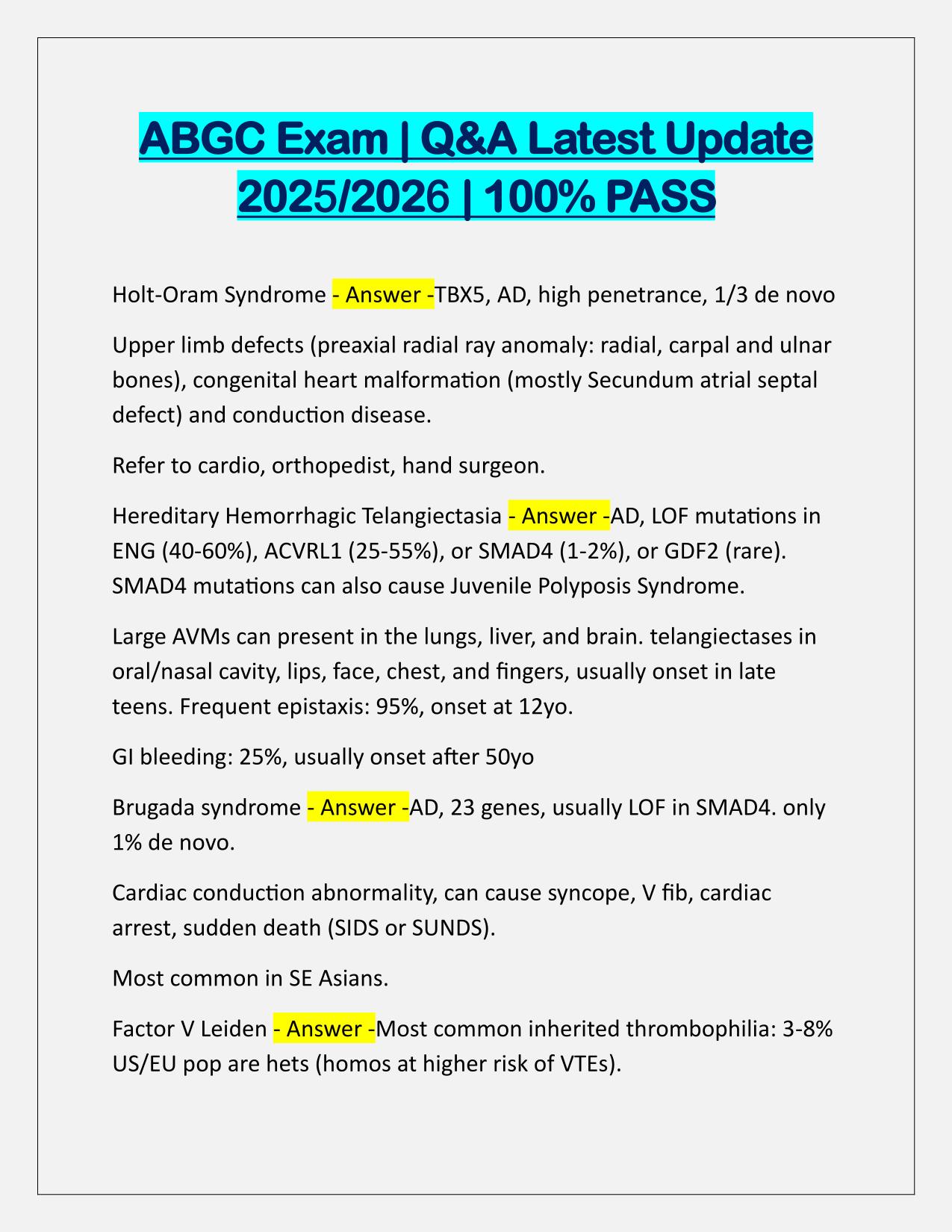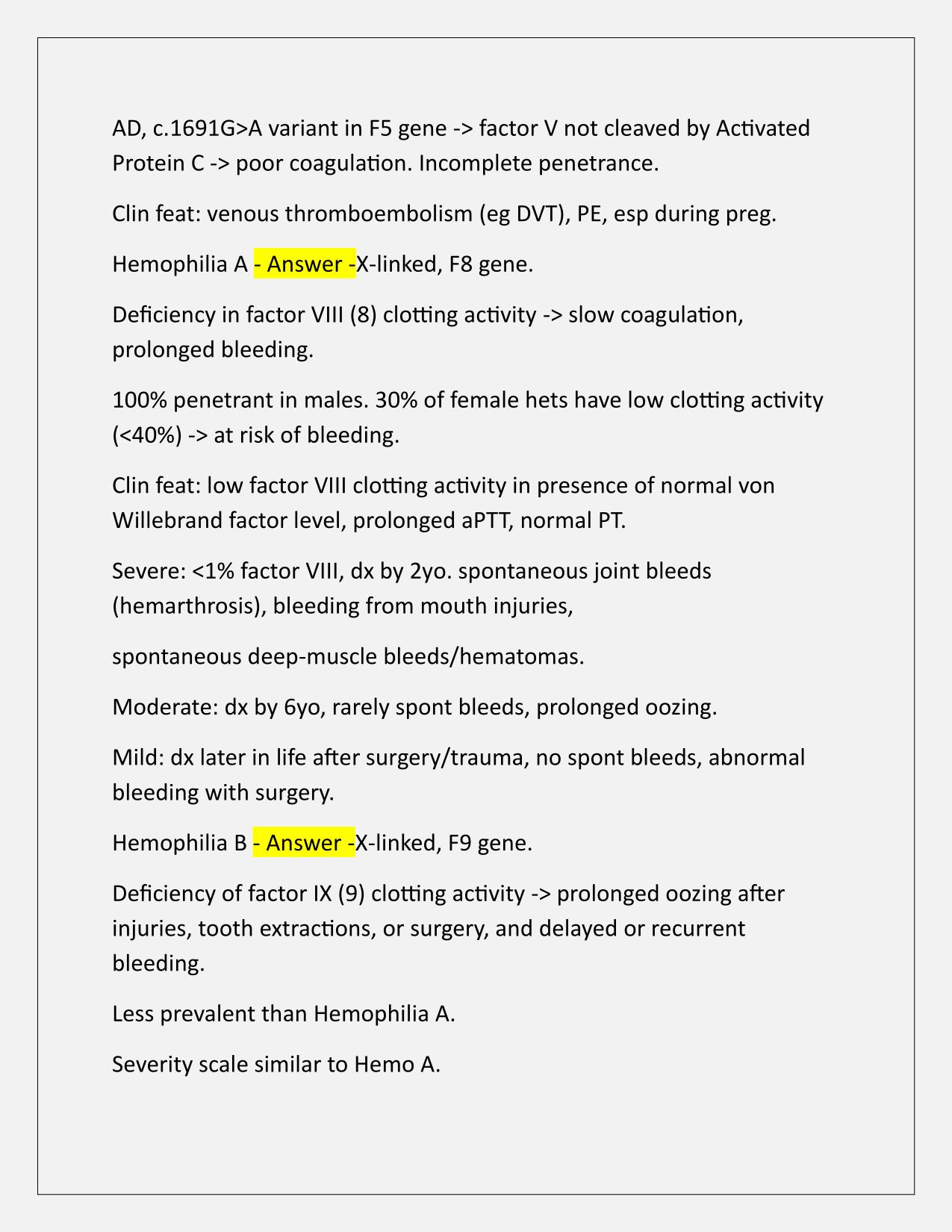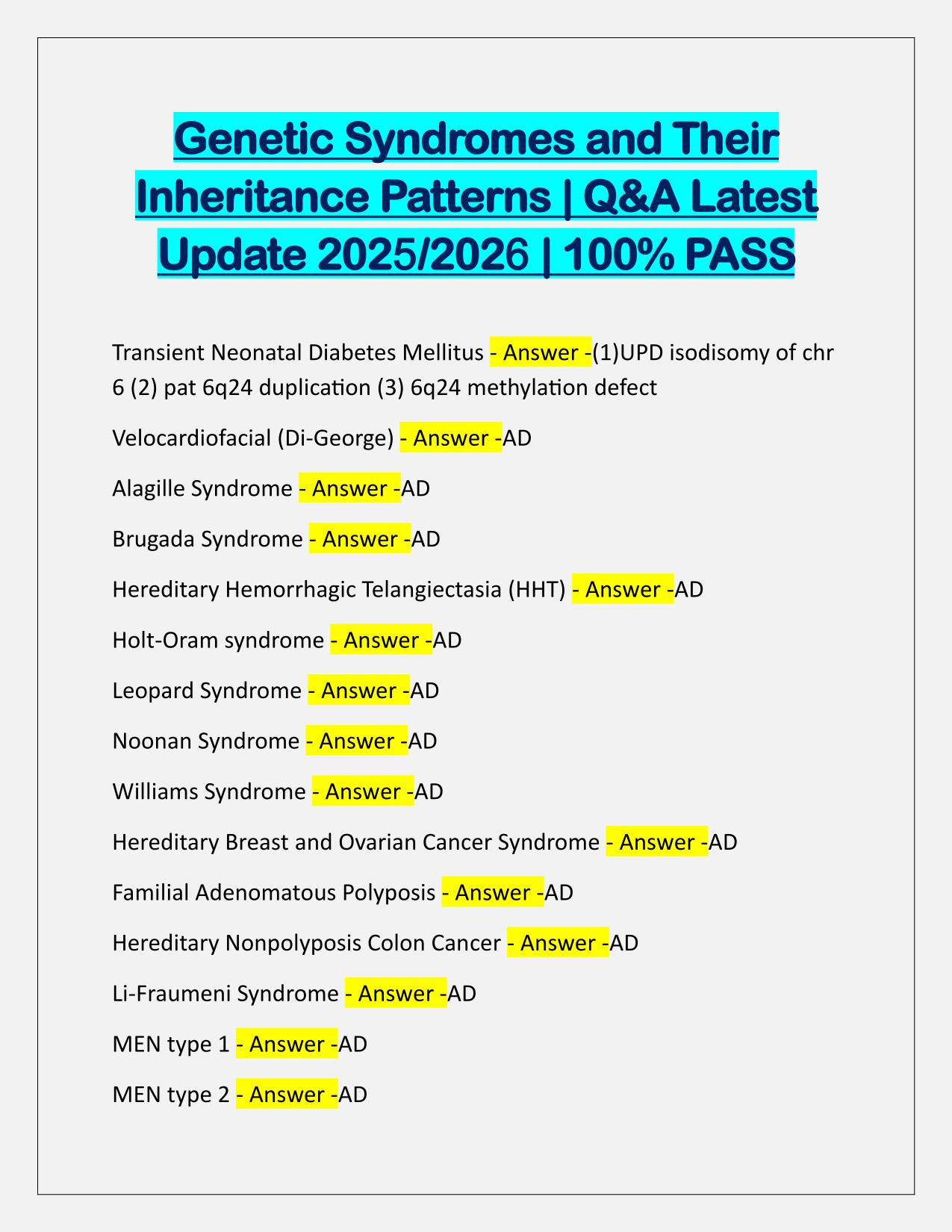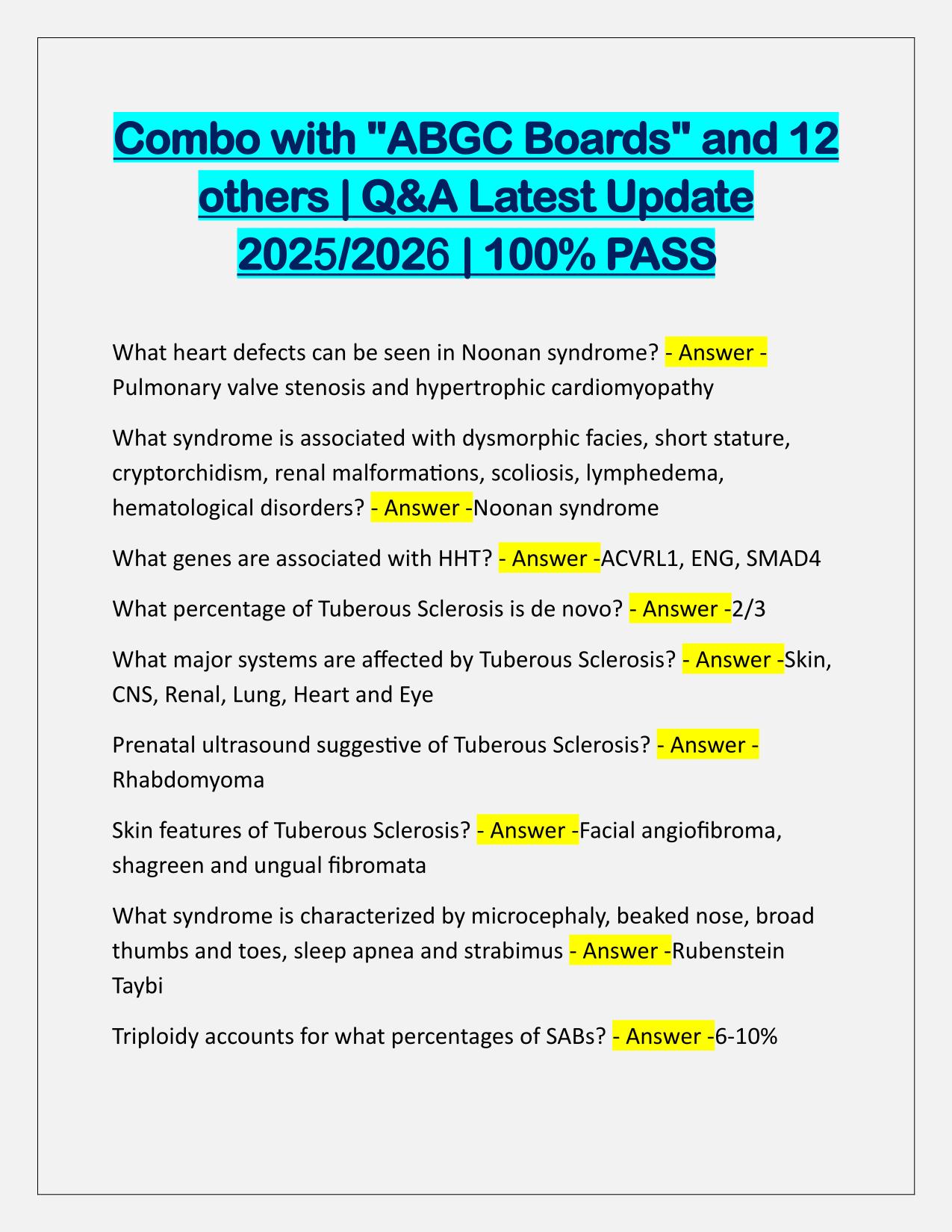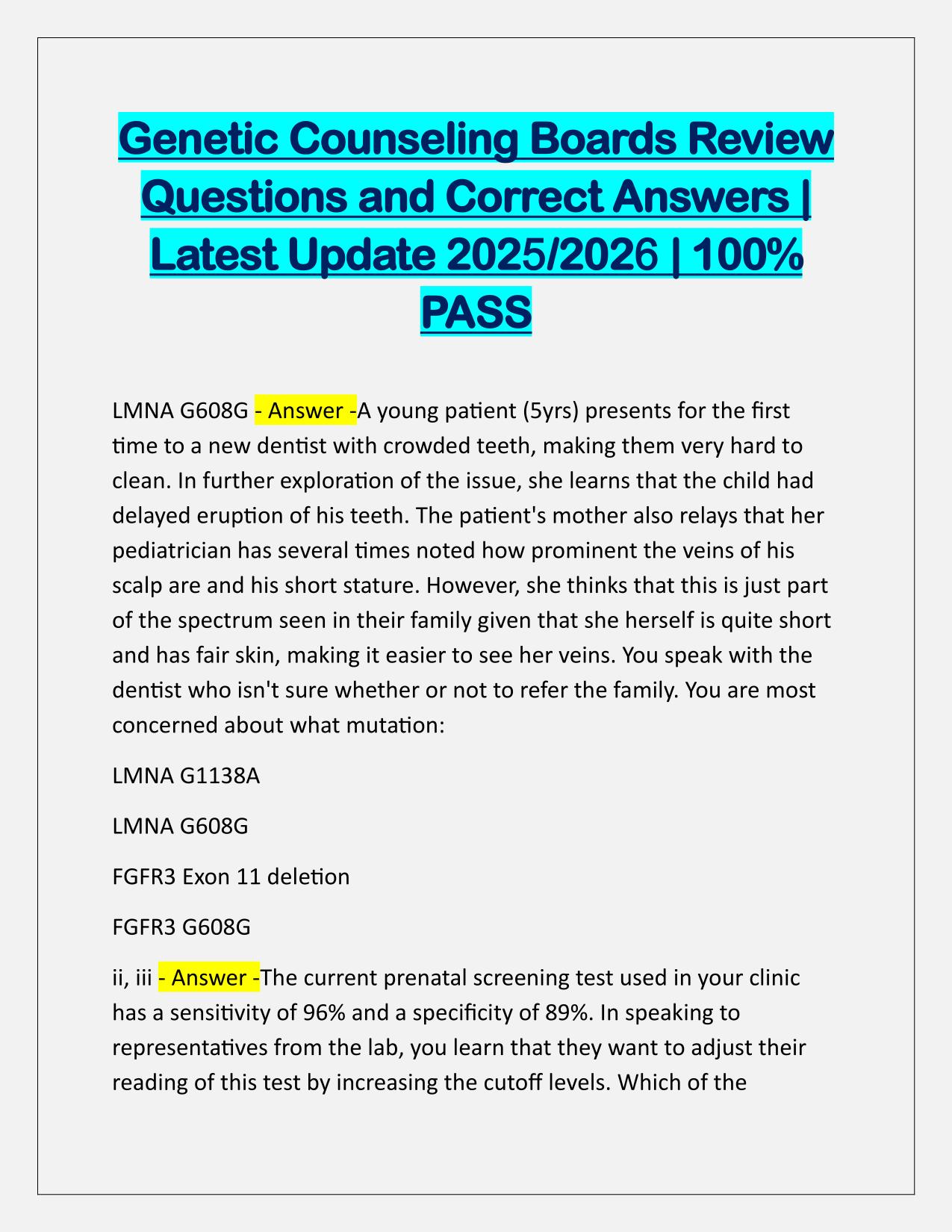ABGC Exam Questions with Verified Answers Latest Update
Course:
ABGC
Institution:
ABGC
ABGC Exam Questions with Verified Answers Latest Update
After purchase, you get:
✅ Instant PDF Download
✅ Verified answer explanations
✅ Refund if not Satisfied
✅ Prepared for 2025/2026 test cycle
Document Information
| Uploaded on: | May 12, 2025 |
| Last updated: | May 12, 2025 |
| Number of pages: | 31 |
| Written in: | 2025/2026 |
| Type: | Exam (elaborations) |
| Contains: | Questions & Answers |
| Tags: | ABGC Exam Questions with Verified Answers Latest Update |
Seller Information

AdelineJean
User Reviews (0)
Exam (Elaborations)
$9.00
Bundle Deal! Get all 27 docs for just $33.00
Add to Cart
100% satisfaction guarantee
Refund Upon dissatisfaction
Immediately available after purchase
Available in Both online and PDF
$9.00
| 0 sold
Related Documents
Available in a Bundle
Content Preview
ABGC Exam | Q&A Latest Update 2025/2026 | 100% PASS Holt-Oram Syndrome - Answer -TBX5, AD, high penetrance, 1/3 de novo Upper limb defects (preaxial radial ray anomaly: radial, carpal and ulnar bones), congenital heart malformation (mostly Secundum atrial septal defect) and conduction disease. Refer to cardio, orthopedist, hand surgeon. Hereditary Hemorrhagic Telangiectasia - Answer -AD, LOF mutations in ENG (40-60%), ACVRL1 (25-55%), or SMAD4 (1-2%), or GDF2 (rare). SMAD4 mutations can also cause Juvenile Polyposis Syndrome. Large AVMs can present in the lungs, liver, and brain. telangiectases in oral/nasal cavity, lips, face, chest, and fingers, usually onset in late teens. Frequent epistaxis: 95%, onset at 12yo. GI bleeding: 25%, usually onset after 50yo Brugada syndrome - Answer -AD, 23 genes, usually LOF in SMAD4. only 1% de novo. Cardiac conduction abnormality, can cause syncope, V fib, cardiac arrest, sudden death (SIDS or SUNDS). Most common in SE Asians. Factor V Leiden - Answer -Most common inherited thrombophilia: 3-8% US/EU pop are hets (homos at higher risk of VTEs).
